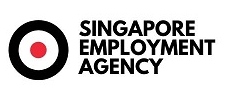Talent recruitment is a very tedious task. Very few get it right despite the fact that all operating companies have to hire. Usually, if there is a poor fit, the recruited talent will either be underutilised or underappreciated. The term a round peg in a square hole comes to mind when we speak about an individual who is tasked to do work that does not fit him. Matching the talent to the required skill set is very important. This is why we recommend that companies follow certain guidelines when it comes to the hiring process.
Step 1: Identifying the position
It is one thing to say that you want to fill a position but it is another to spell out carefully what the position entails. This is where defining the job scope of the position that the company is looking to fill is extremely important. Very few companies actually define the job scope proper from the onset. This is why some employees have remarked that they are doing what they were hired to do. For example, we have instances whereby customer sales executives have been asked to deal with HR-related matters in the company. These individuals are not trained, not used and in many cases, just not willing to deal with HR matters. Such ill-defined job scopes are the reason why many companies end up with a high turnover rate.
Step 2: Planning and preparing for the interview
The interview is mere minutes, not hours or days. You will be expected to make a decision in that very short period of time as to whether the interviewee in front of you is suitable for the position that the company intends to fill. Therefore, the first tip for the interview is…
to be punctual…
This is important. If you only have 15 minutes to get to know the candidate, it should not be the case where you are late by 10 minutes and are left with 5. That being said, the candidate should not be late for the interview as well.
Next… be organised…
List down the questions that you want to ask. Do not rely on your ability to do the interview impromptu. This is because if all candidates are asked the same set of questions, then you will have a common basis to compare them.
Always remember that the interview is not just about you getting to know the candidates but for them to know you as well.
Step 3: Research the candidates’ profile
You’ve got their resume. Hence the next logical step would be to research on the person who applied for the position. You will need to spend some time looking through the resume. Look at the skills, experience, and qualifications and see whether this candidate fits the criteria. In this day and age, many candidates merely submit their applications to many companies that are looking to hire in the hope that one will bear fruit. It is your duty, as the individual who is deciding on who to hire, to look through and sieve out the genuine and suitable applicants. The most basic form of screening can be done on social media. You should look through the candidates’ social media profiles to ascertain if this candidate will be a positive addition to your company. If you see negative and derogatory comments and confrontational posts on his or her social media, then perhaps such an individual may not be able to work harmoniously with the rest of the company.
Step 4: The actual interview
This is crucial. You will need to be clear as to the format of the interview that you will be conducting. The questions you ask should help you to determine the following questions:
a) Is this person suitable for the job?
b) Is this person suitable for the company?
c) Is this person suitable for the management?
The reason for this is to ascertain that the candidate before you fit the position, can be integrated well into the company (i.e. can mix well with the other employees of the company) and the candidate can work well with the management of the company.
Here are some questions which you may find helpful during the interview
For a) Is this person suitable for the job?
“In your previous employment, what were your biggest contribution to the company?”
“Which aspects of the current job that you are applying for will you find most challenging and which will you find most enjoyable?”
For b) Is this person suitable for the company?
“In your previous employment, what did you enjoy most about working for that company?”
“Can you tell me about a time when you were part of a successful team which dealt with a certain project in your previous employment?”
For c) Is this person suitable for the management?
“Can you tell me about a manager who you most enjoyed working with and why?”
“Tell me about a time you found it difficult to work with a particular boss.”
Step 5: Post interview
Once the candidates have left, it is time for you to pen down your thoughts while your memory is still fresh. Run through the interviews with another management staff and discuss your thoughts.
Running through these 5 steps, while they may seem logical, are not common for most companies. The reason is that the hiring process for most companies is deemed as hit and miss. While we do agree that following our framework will not mean that the right candidate fills the position every time, the structuring of a proper framework helps to minimise the chances of mismatching candidates for positions.
If you are looking for help with your hiring needs, our company can assist with looking for the right candidate for your company. To get in touch with us, email us at [email protected].
If you have any company-related queries, you may email us at [email protected]. When in doubt, seek legal advice or consult an experienced licensed Employment Agency with the Ministry of Manpower.
Yours Sincerely,
The editorial team at Singapore Employment Agency
For more useful articles and videos, visit the Singapore Employment Agency resource page.
If you would like to submit a question or would like us to do an article on certain topics, please email us at [email protected].
Little Big Employment Agency Pte Ltd is a licensed Employment Agency with the Ministry of Manpower with license number 19C9790.

